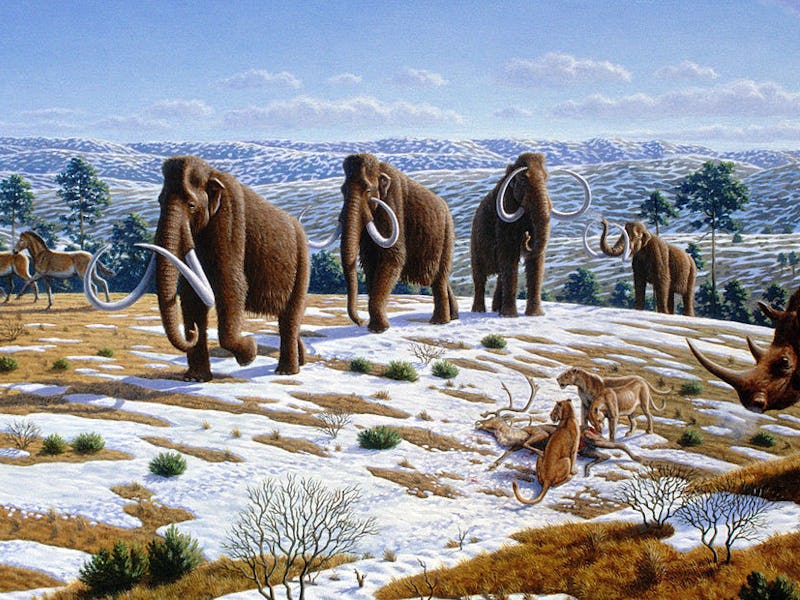Resurrecting Wooly Mammoths Will Reverse-Engineer Extinction
A Harvard professor says elephant-mammoth embryos are only two years away.

Scientists at Harvard say they are close to creating a cold-adapted version of an Asian elephant that resembles the extinct wooly mammoth. “Our aim is to produce a hybrid elephant-mammoth embryo,” Professor George Church tells the Guardian. “Actually, it would be more like an elephant with a number of mammoth traits. We’re not there yet, but it could happen in a couple of years.”
Church’s team is working on splicing bits of mammoth DNA into Asian elephant cells. The two animals are closely related — they have a common ancestor going back just five million years. In recent years, scientists have been able to extract actual DNA from mammoth carcasses frozen in permafrost, making it possible to reconstruct the genome of the great animal. Church’s team uses CRISPR — a revolutionary new tool that allows for precise cutting and pasting of genetic code — to replace bits of Asian elephant DNA with those from a mammoth. The goal is to insert genes for mammoth-like traits, like small ears and lots of fur, allowing the beasts to survive harsh Ice Age winters.
Getting that mammoth DNA into elephant cells is astounding in itself, but in order to get an actual animal they will have to CRISPR embryonic stem cells — the sort that can divide and ultimately become tissue for any part of the body. This is the step that Church contends might be possible in a couple years.
A baby Asian elephant with its mother.
But the trials won’t end there. Church’s team hopes to gestate the elephant-mammoth embryo without a surrogate mother — an enormous technical challenge but an ethical necessity, given the fact that female Asian elephants could be harmed through forced pregnancies. So far, he’s managed to gestate a mouse halfway to term outside a natural womb. Getting an elephant the whole way there will be a whole lot more difficult. It could be decades before this bit becomes a reality — if it ever does.
It’s reasonable to wonder what the point is of bringing the wooly mammoth back to life, but thinking of it as a “de-extinction” project might help. It’s hoped that doing so will provide an alternative path to survival for endangered Asian elephants, and that they could also aid in the fight against climate change. The theory goes that when large herbivores trample the snow-covered tundra, they reduce its insulating power and let the cold seep deep within the soil. This hedges against permafrost melt, which has the potential to release enormous quantities of greenhouse gases into the atmosphere in coming decades.
But more than that, the revival of the wooly mammoth could actually nullify the concept of extinction altogether. What will it mean to go extinct in a world where the miracles of modern science can bring back a creature that has been gone for thousands of years?
The truth is, extinction as it exists today is already a bit of a squishy notion. Animals have a way of holding on — they can experience rapid declines and then somehow continue to exist in numbers that hardly constitute a population and yet continue to be there. Some creatures are extinct in the wild — human captors watch as the last of a species die off in front of them. Others are presumed extinct — they haven’t been seen in awhile, but who knows? — they’re awfully hard to spot anyhow.
The focus on whether some exists or not is perhaps unproductive. If the last of the Asian elephants were to die, humans might launch some ambitious endeavor to bring it back. But what’s the sense of birthing new elephants if their habitat remains destroyed? Unless you remedy the underlying conditions that allowed for extinction to occur, no medical miracle will do an animal much good.
If there’s hope for the mammoth-elephants of the future, it’s that their preferred habitat will be relatively unpopulated parts of the world, where they can go on munching tundra grasses and saving our asses from climate change in peace.